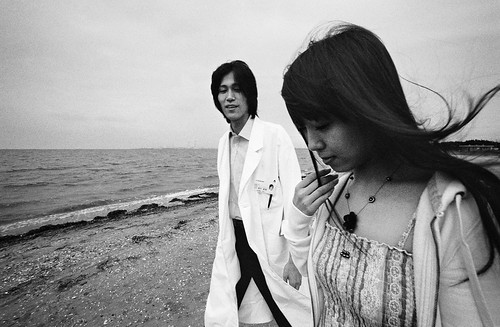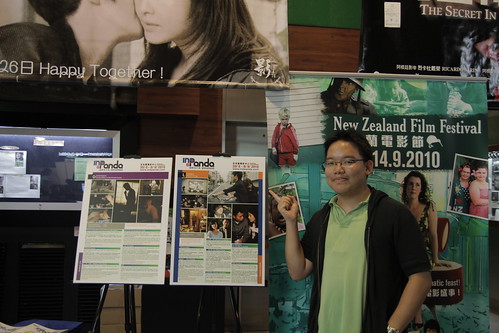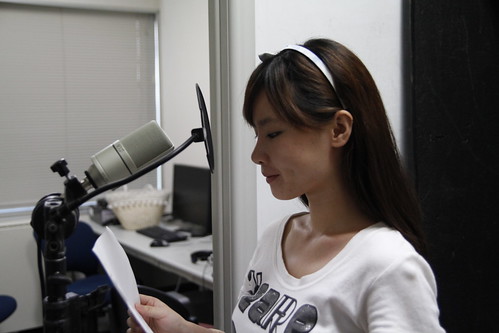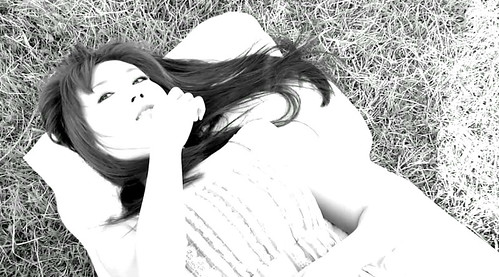![[INHALATION] Mei (Susan Lee Fong Zhi) musing in a butcher shop](http://farm5.static.flickr.com/4128/4983624866_f508d1e2f1.jpg)
Edited this together two nights ago. The music you here in the trailer is the main theme of the short film and is composed by my now-frequent collaborator Wong Woan Foong. Cello performed by Mark Shuping.
video page
![[INHALATION] Mei (Susan Lee Fong Zhi) musing in a butcher shop](http://farm5.static.flickr.com/4128/4983624866_f508d1e2f1.jpg)


![[INHALATION] Mei (Susan Lee Fong Zhi) musing in a butcher shop](http://farm5.static.flickr.com/4128/4983624866_f508d1e2f1.jpg)
![[kingyo] A nocturnal conversation at the carpark](http://farm4.static.flickr.com/3393/3317502597_1a46cbc849.jpg)
![[INHALATION] Seng (Ernest Chong) confronts Mei (Susan Lee)](http://farm5.static.flickr.com/4130/4983036979_5cd9bfc3d2.jpg)
![[Love Suicides] The woman (Kimmy Kiew) is pensive](http://farm4.static.flickr.com/3260/3180113270_5794b293d7.jpg)
![[INHALATION] Seng (Ernest Chong) and Mei (Susan Lee) share a quiet moment at the dock](http://farm5.static.flickr.com/4113/4983629544_9a8122cc8f.jpg)
An alternate version of The Tiger Factory’s narrative, compressed, stretched, and flipped, by its writer/producer.

Suitably, the still photography used throughout “The White Flower” is incredibly beautiful, possessing much richness, crisp clarity and great attention to framing and lighting in every shot. In fact, viewers are likely to be doubly grateful for the slideshow-like manner in which the shots progress, as it allows them to better savor each image while seeming to magnify and expand each of the contemplative, intimate moments that comprise the film’s episodic structure.


A young Chinese woman living in Tokyo is haunted by remnants of a forbidden relationship and a dark family past. She ends up in a sanitarium and meets a doctor conflicted between his job and his personal feelings. After being discharged, she meets a wandering Thai filmmaker contemplating the relationship between art and love. Her encounters with them lead to unexpected revelations.

![[3PM] Mika (Yumiko Kitazawa) listens to music](http://farm4.static.flickr.com/3662/3641239969_d976925f0f.jpg)

Dear Readers,
My name is Quentin, but please call me Quentin S. Crisp. I have had the privilege of being interviewed on this blog in the past, and now I would like to address you directly. For some time I have been in correspondence and creative collaboration with Justin Isis, guest writer on this blog. A significant overlap in our aesthetic concerns led us to found the dadaoist blogzine, Chômu. Catching the westering rays of that dying blog (which will perhaps rise again), and taking its name therefrom, a new celestial body has appeared in the publishing firmament: Chômu Press.



When we watch something going on we don't notice colour. A black-and-white film immediately creates the impression that your attention is concentrated on what is most important. On the screen colour imposes itself on you, whereas in real life that only happens at odd moments, so it's not right for the audience to be constantly aware of colour. Isolated details can be in colour if that is what corresponds to the state of the character on the screen. In real life the line that separates unawareness of colour from the moment when you start to notice it is quite imperceptible. Our unbroken, evenly paced flow of attention will suddenly be concentrated on some specific detail. A similar effect is achieved in a film when coloured shots are inserted into black-and-white.
Colour film as a concept uses the aesthetic principles of painting, or colour photography. As soon as you have a coloured picture in the frame it becomes a moving painting. It's all too beautiful, and unlike life. What you see in cinema is a coloured, painted plane, a composition on a plane. In a black-and-white film there is no feeling of something extraneous going on, the audience can watch the film without being distracted from the action by colour. From the moment it was born, cinema has been developing not according to its vocation, but according to purely commercial ideas. That started when they began making endless film versions of classics.

An ex-colleague of mine was rather disdainful about Edmund, saying that he thought far too highly of himself.
He obviously didn’t get Edmund at all. He’s a funny soul, who is often misunderstood. If only they could see past the hilarious fascetiousness on his blog and see the sensitive soul with a gift and love for narrative.